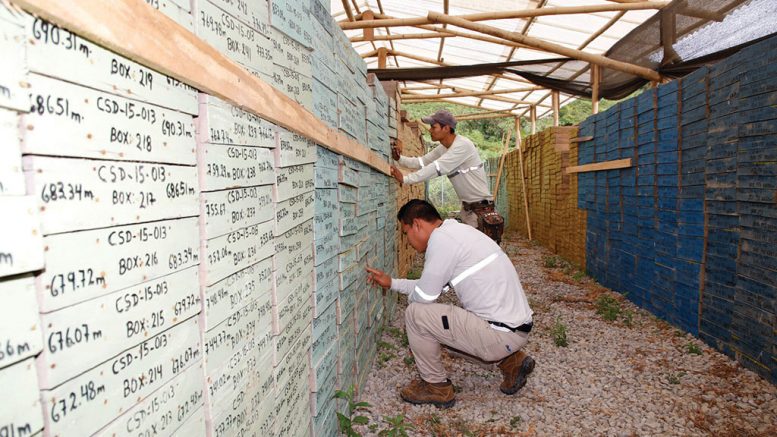In October, the Committee for Mineral Reserves International Reporting Standards (CRIRSCO) released the October 2019 version of the CRIRSCO template for standardized public reporting of exploration results, mineral resources and mineral reserves.
The publication marks another step forward in the harmonization of international reporting standards used in jurisdictions like Canada (CIM), Australia (JORC), South Africa (SAMREC) and the U.S. (SME), along with 10 other organizations from around the globe.
With the combined market capitalization of publicly listed mining and exploration companies in each of these 14 jurisdictions accounting for over 80% of the worldwide listed capital for mining, the standardization of definitions, language and content for publicly disclosed technical data works to the mutual interest of all parties involved, and most notably, the public investor who is often ill-equipped to compare apples to oranges when evaluating mineral projects.
Beyond the interests of those participating CRIRSCO jurisdictions in which reporting standards are already well entrenched, the template is intended as a framework that countries without reporting standards can use to develop their own mineral industry standards and codes.
The CRIRSCO template is neither a code in and of itself, nor is it a prescriptive recipe (or “how-to” guide) on what constitutes industry compliant disclosure, but is rather a benchmark by which other codes and standards can be compared and developed. To facilitate this, the template includes a breakdown for each topic along with standard definitions and guidelines in the context of each topic.
Topics include competence and responsibility, reporting terminology, and reporting of exploration targets and exploration results, as well as guidelines specific to disclosure of mineral resources and reserves in public reports including but not limited to news releases, website content, and annual and quarterly company reports. And as social media grows as a platform for disseminating information and engaging stakeholders — blurring the boundaries between promotion and regulatory disclosure — so too does the need to ensure compliance with the principles of transparency, materiality and competence.
To this day, many issuers, particularly those in the junior exploration space, fail to adhere to these governing principles, particularly at the early stages of a project’s life cycle. Often glossed over or outright ignored are modifying factors that materially impact the economic viability of projects including legal, environmental, social and governmental factors that can lay waste to the most robust engineering studies. Regrettably, these essential elements are often painted with broad-stroke assumptions based on the status quo and can even propagate into more advanced stages of project development, where the tipping point for failure can be far more severe.
Fortunately, increased public scrutiny and self-regulation is driving many issuers to adopt more proactive versus reactionary strategies to their social licence to operate. Boards are quickly realizing that the interests of shareholders and local stakeholders are less at odds than previously perceived, with project value increasing in proportion to stakeholder engagement. A 2011 study from Wharton Business School estimated the potential impact to market value to be as high as 60% when comparing issuers with ad hoc stakeholder engagement plans to those with more systematic strategies. Canadian mining and exploration companies have notoriously been excellent advocates for their industry, and thanks to changes in public policy and perception, they are also becoming its most vocal critic.

Drill core from Red Pine Exploration’s Wawa project. Credit: Red Pine Exploration.
The standardization of the reporting of exploration results, especially those used to support disclosure of mineral resources and reserves, is another area that is seeing increased scrutiny, particularly from within the industry, as practitioners work towards greater transparency. While the criteria for resource classification is relatively black and white, rules governing the disclosure of results for the underlying data have historically been subject to comparatively little or no critical analysis.
Bulk samples are one such example where the simple disclosure of results can be perceived to imply positive project viability where none may exist. Vital to any form of disclosure is the provision of context, as well as appropriate cautionary language about the various risks to the project’s success. Even the simple act of rounding of significant figures can help manage the perceptions and expectations of the reader. In other words, it’s incumbent on the practitioner to document as much about what they don’t know as what they do know, so as not to mislead the reader.
Rubicon’s Phoenix gold project and Guyana Goldfields’ Aurora gold project are just two examples of the dire consequences of failing to address risks (in these examples, geological risk) early in the project’s life.
The complexity of mineral resource and reserve estimates will only continue to escalate as ever more geologically complex deposits are matched by newer and more advanced estimation methods. While the underlying principles could stay the same, the onus is on practitioners to adhere to standards and guidelines as those proposed by CRIRSCO and its member organizations to help ensure that projects are measured with a similar yard stick. While no two projects will ever be alike, the common thread that unites them is the means by which they are compared. In so doing, mining investors can be confident that any project, be it an apple or an orange, can be seen through the same lens.
— Kurt Breede, P.Eng., is the Principal of Metallica Consulting and an expert in mineral resource estimation and technical disclosure. He is also a member of the Canadian Securities Administrators’ Mining Technical Advisory and Monitoring Committee.


Be the first to comment on "Commentary: Apples & oranges — The standardization of technical reporting"